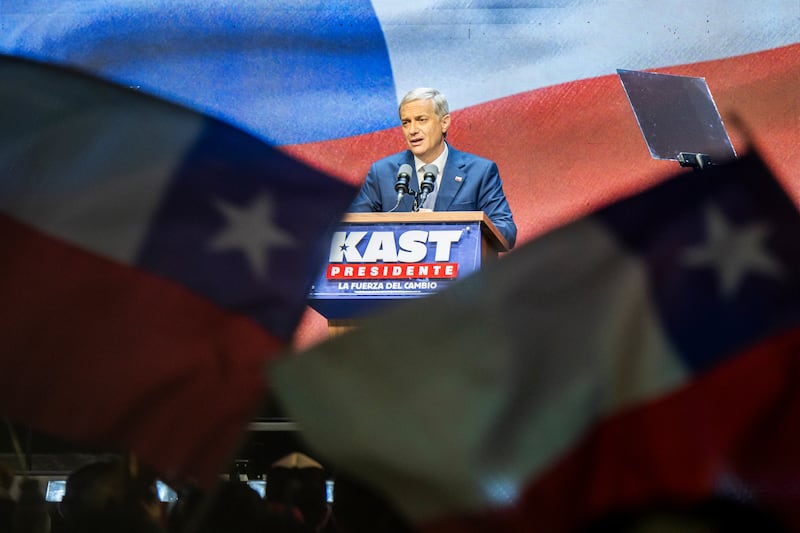Many people will know the architecturally striking Georgian village of Tyrrellspass in Co Westmeath from road trips between Dublin and Galway before the network of motorways changed our cross-country routes.
But, perhaps, fewer will know that Tyrrellspass – so-called because the Tyrrell family controlled the east-west passage between two extensive bogs, Cloncrow and Tore, from the 12th century – has a bogland biodiversity trail within a few minutes walk from the village.
The raised bogs, which define much of the landscape in the Irish midlands, brought employment and industry to the region in the mid-20th century. But now, with the demise of commercial turf-cutting and the dwindling number of domestic turf cutters, these primeval landscapes are being transformed into recreational spots with the duel benefits of restoring habitats and capturing carbon to alleviate climate change.
The 3.5km looped walk through Cloncrow bog and adjoining farmland and woodland, which opened in April 2023, is a perfect example of this transformation. Eugene Dunbar, the secretary of Ethos (Everything Tyrrellspass Has on Show) and Mícheál Callaghan, development officer with the Community Wetlands Forum (CWF), of which Ethos is a member, are both keen to explain what they have been doing here.
RM Block
There is something very peaceful about spending time on a bog on a calm day when the watery sunshine gives way to a gentle mist. The prickly gorse bushes with their tiny, twinkling yellow flowers sit among the burnt orange undergrowth. The 360 degree vistas allow the eyes to rest on distant woodlands or search for subtle underground movement below the stable boardwalk which welcomes our transit through this ancient landscape.
With dams in place to allow the water table to regain its natural levels, the sphagnum moss floats on the surface as a signal that these wetlands are ready for their journey back in time to capture carbon again to help restore the planet’s atmospheric balance.
“It is one of the few semi-intact raised bogs in the country and when Bord na Móna took control of 80,000 hectares of bogs for industrial harvesting for briquette factories and energy for power stations, the 234 hectares of Cloncrow bog remained in private hands,” explains Dunbar, a retired secondary school history and geography teacher.
Getting permission from private landowners for the boardwalk across the bog and through the woodlands and meadows was one of the first tasks the Ethos committee had to undertake. “It’s a huge credit to the landowners to let us walk through their land,” Dunbar says.
Dunbar has an avid interest in the birds and insects on the bog. “There is often an obsession with the curlew but we need to do so much more to protect all the common birds too. Once you conserve the habitat, the biodiversity will right itself. I love this habitat with its birch and holly trees, mosses and lichens,” says Dunbar.
Monitoring the butterflies and moths on the bog is another of his passions. He has even reared the eggs of marsh fritillary butterflies and emperor moths, releasing them back into the wild once they emerge from their larvae. Information boards with photographs of the insects (eg green hair streak, small heath and silver-washed fritillary butterflies) and flowers (like the carnivorous sundew, bog asphodel “the daffodil of the bog” and bog cotton) in the bog helps visitors identify what they may see during the year.
The Ethos members have also encouraged farmers, who had previously drained and reclaimed land on the edge of the bog, to unblock the drains so the water table can return to its natural level. The Farm Peat European Innovative Partnership between Irish Rural Link, the Wetlands Survey of Ireland and the CWF is supporting local farmers financially to return these marginal meadows to wetlands. “It has been received very positively. I hope lessons will be taken on in the next Common Agricultural Policy to continue to compensate farmers for this work,” says Dunbar.
The Care-Peat project, another European funded initiative to restore the carbon storage capacity of peatlands, has resulted in natural recolonisation of sphagnum moss, an indicator that carbon is once again being sequestered by the wetland. “Heather is the dominant plant on a dried out bog but we can see now that as the sphagnum moss is coming back, the heather is dying off,” says Dunbar. Scots Pine trees are also regenerating on the edges of the bog.
Pat and Marian Mooney walk the Cloncrow Bog and Village Trail every day. “It is the best thing that has happened in this area. We would have driven to Lough Ennell to walk before but now we walk here every day,” says Marian.
Callaghan says that while bogs were places people came together to cut turf in the past, now these new projects continue the spirit of meitheal. “For example in Abbeyleix bog, people build and maintain the boardwalk and it’s great to see 10-15 people sitting having tea on the bog after doing their work. The social part of these community led initiatives is important,” says Callaghan.
He says members of the CWT have strived to replace the “sense of placelessness” that emerged once turf cutting stopped with new projects. “In Kiltevan, county Roscommon, the tidy towns group have created way-marked looped around pre-existing bog roads with beautiful seating and signage,” Callaghan says.
Other groups want to find new uses for the extensive rail infrastructure developed by Bord na Móna to remove turf from the bogs. “There can be a sense of whitewashing the past as we transition; that we should forget about or be ashamed of turf-cutting. But some members such as Scohaboy in Cloughjordan, county Tipperary have been collecting the oral histories and folklore around turf-cutting,” says Callaghan.
The oral history project, Know Your Bog, continues to welcome people to add stories, photographs or videos to its open source archive.
Bernie Henry, chair of the Clara Heritage Society in Co Offaly, says some people still use turf for fuel. “During this transition, we have to find ways to support people who are dependent on turf to move to other fuels. Around here, there is still a strong link to the sensory experience of smelling turf, burning turf and having a shed full of turf,” Henry says.
“I now have a shed full of logs and I still have the range going all day long in the kitchen. But, I am just about to get my house retrofitted with external wrapping.” Meanwhile, Anna Orman hopes to set up an industrial heritage route in Co Offaly.
Callaghan says that one of the true vales of the CWF is to offer communities a network of contacts as different groups protect and manage their local bogs.
“We also have good connections with local authorities, the National Parks and Wildlife Service and the Heritage Council and while the implementation of policy needs to be more embedded in communities, we also need engagement with these semistate agencies,” he says.
- See our new project Common Ground, Evolving Islands: Ireland & Britain
- Sign up for push alerts and have the best news, analysis and comment delivered directly to your phone
- Find The Irish Times on WhatsApp and stay up to date
- Our In The News podcast is now published daily – Find the latest episode here



















